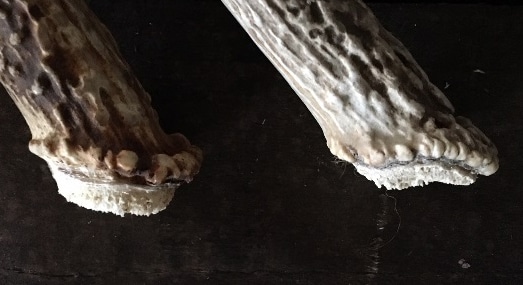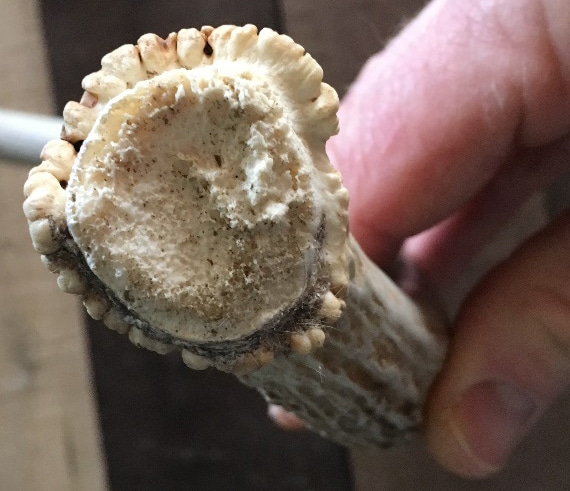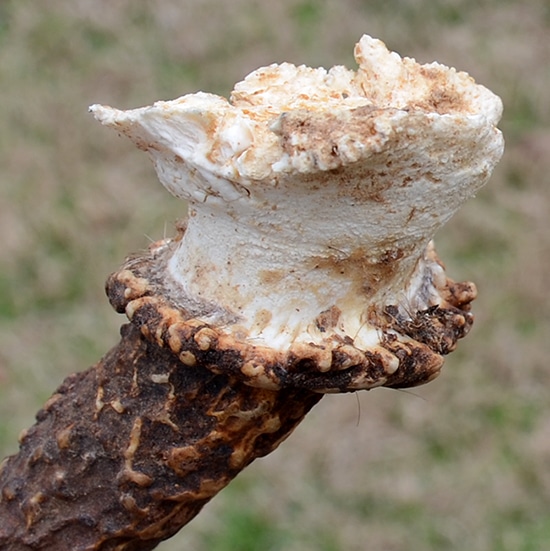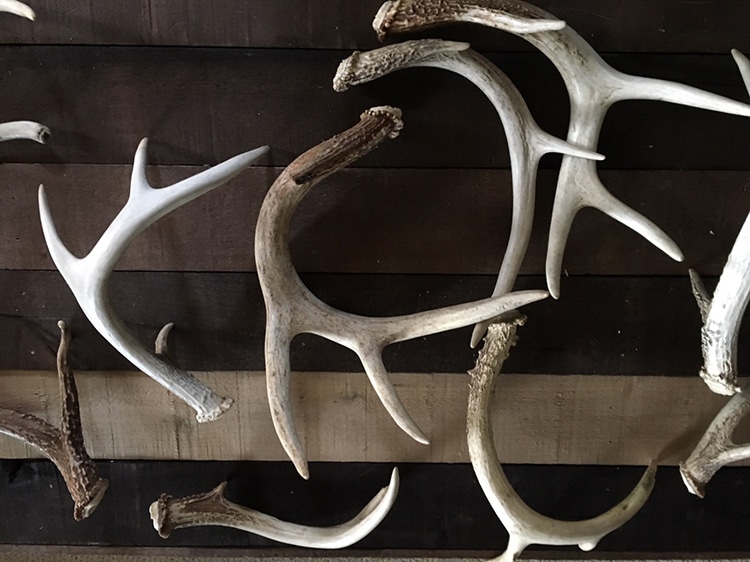Deer season is over. Turkey season is on the horizon. That wonderful season between the two has arrived –– shed season! Social media is exploding with pictures of shed antlers, and Whitetail Properties’ annual Shed Rally has become a big event. Given that more outdoorsmen and women are picking up sheds today than ever before, here are six things you can learn about the bucks that dropped them.
Survivor’s List
Most hunting seasons end before bucks cast their antlers, so a shed antler is a strong sign that a particular buck survived the gauntlet of hunters in his neighborhood. He’s not guaranteed to survive winter and escape predation, but research shows if we don’t hit them with a bullet, arrow or a Buick, the majority will still be alive on day one of the next hunting season.

Every shed is the sign of a buck that survived hunting season and will most likely be back for the next one.
Better Scoring Skills
If you have a trail-camera picture of the buck, you can learn to better estimate the buck’s antler score on the hoof. There is no better way to practice than to estimate score from a picture, score the actual antler, and then compare the score to your estimate. Just as you can estimate a buck’s age by body characteristics and verify that age with his jawbone, you can estimate a buck’s score from a photo and then verify with a shed antler. Unless you harvest the buck, there is no better way to become proficient at estimating score on the hoof
Healthy Bases
You can learn about the health of the buck by studying the base of his antlers. Healthy bucks will have bases that are rounded and convex (see below). Injured or nutritionally stressed bucks often have bases that are irregular, oblong and/or concave.

The base on the left is rounded outward or convex, a sign of good health in the deer that dropped it, while the base on the right is concave, a good sign of an injured or nutritionally stressed deer.

Another view of a concave base, which often suggests the buck that dropped it was stressed or unhealthy.
Healthy Weight
We can learn a little more about a buck’s health by assessing the relative weight of the antlers. In general, healthy bucks have antlers that are well mineralized and dense. These antlers feel relatively heavy for their size as compared to nutritionally stressed bucks whose antlers often are more porous and thus feel light for their size. There’s not a particular weight an antler should reach, rather it’s clear if you’ve held many antlers when one feels unusually light or heavy.
Brain Abscess Checkup
Brain abscesses have gained a lot of attention from deer hunters and managers in the past few years. In general, a brain abscess is a bacterial infection in a deer’s head. They can cause nontypical antler growth, and in extreme cases death. Signs of brain abscesses include infection around the base of an antler, so you may see “pus” on a deer’s head, or a piece of the skull may actually still be attached to a shed antler (like the antler below).

A significant portion of the skull plate is still attached to this shed antler, a sign of a brain abscess, which can erode the bone around the antler bases. The deer that dropped this antler likely died soon after losing it.
Drop Timing and Health
A final health tip you can learn involves the timing of the shed antler. In general, in the North mature bucks cast their antlers earlier than young bucks, and in the South they cast them later than young bucks. However, a buck that drops his antlers much earlier than normal is likely suffering from an injury or nutritional stress. A buck that holds them longer than normal is likely exhibiting a sign of good health. If you find the shed in April or May, that doesn’t help much with the timing unless you know when the buck lost it from sightings or trail-camera pictures. However, a December or early January shed is nearly always a sign of trouble.
One Thing You Can’t Learn
One final item that you cannot tell from a shed antler is a buck’s age. You may be able to estimate relative age if you’ve been collecting antlers, trail-camera pictures and jawbones, but there’s too much overlap in the age classes to assign an exact age to a buck based on a shed antler.
Good luck shed hunting this spring, and be sure to take someone to the woods with you to share in the enjoyment of the wonderful shed season.
